Renault Arkana, assembled in Ukraine
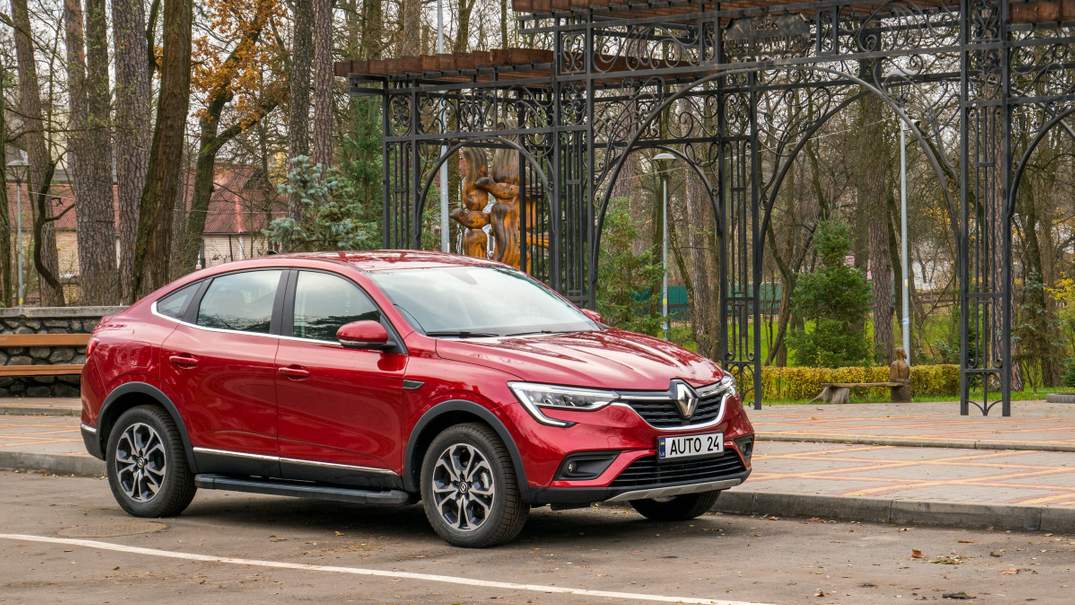
The appearance of Renault Arkana on the Ukrainian market caused some emotions related to the origin of the car. We will try not only to tell you, how does this car drive, but also take a close look at all components, to understand, what parts is it made of and answer the question honestly: can he be considered Ukrainian, Russian, French or something else.
The appearance of the Renault Arkana is one of its strengths. It resembles the currently popular coupe crossovers of premium brands. The arcana looks much more expensive than it actually costs. Our test version with the best engine with power 150 horsepower and all-wheel drive cost money 28 469 USD. In fact, a very good offer for a stylish and modern crossover.
Comfort at an affordable price
The cabin no longer has the premium feeling of being on the outside, but she cannot be called poor. The upholstery made of a combination of eco-leather and fabric looks good and is the best solution in terms of durability and practicality. Almost all plastic parts of the cabin, including cockpit, they are hard to the touch, but from a practical point of view, it's also a plus.
The ergonomics of the driver's seat will appeal to people of short and medium height, which they like to be loose, comfortable fit.
There is enough space in the rear row for up to three medium-sized passengers. Low central tunnel (a tribute to all-wheel drive) hardly bothered.
At first glance, the trunk is not very bulky, moreover, the loading height appears to be quite high. No wonder, because there is a full-fledged spare wheel under the floor – on our roads it is not superfluous. However, if you fold the rear seats in the Arkana, you can carry a lot of cargo.
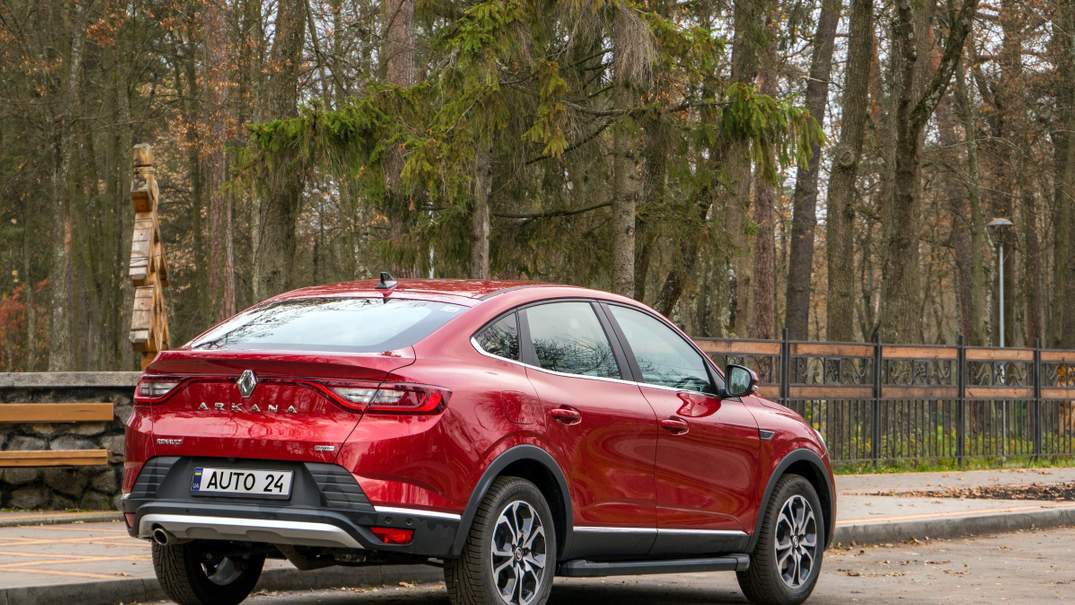
Balance between roads and terrain
A powerful engine 150 KM for the Renault Arkana is enough. The engine itself has very good traction properties and does not require high speeds. Maximum torque 250 Nm. available from 1700 RPM. Variator, which skillfully mimics the classic 7-band slot machine, works very smoothly and comfortably. During normal city operation, it changes gears smoothly, but if it requires dynamic acceleration, mimics gear changes.
A good reserve of energy combined with great jumps makes, that Renault Arkana, if not a real all-terrain vehicle, is a very well suited all-terrain crossover.
On a smooth road, Arkana does not encourage active driving, but it can corner very confidently and maneuver at high speeds if necessary. Swaying and excessive softness of the suspension, which is typical of many crossovers, it is hardly felt here.
The arcana drives almost like a regular hatchback. The excessive lightness of the steering wheel is a bit confusing. You can make it "sportier" in the settings, but still light, which encourages leisurely driving.
All-wheel drive in automatic mode turns on quite quickly, but if you need to move e.g.. after loose sand, it can be activated manually. The electronic assistant is also doing well. If the stabilization system works too early on wet asphalt, not allowing the driver to even get close to the skid, it is on the sand that the system brakes skillfully, sliding on the wheels and transmits torque there, where wheel grip is best.
In general, when it comes to the balance between speed, service and passability, The arcana is in the middle. This car is convenient in the city, on the road and in easy terrain. At the same time, Arkana does not provoke "feats" in the form of races at traffic lights or competitions such as "who will be able to go as far as possible in the mud". This car does its job straightforward, quiet and efficient.
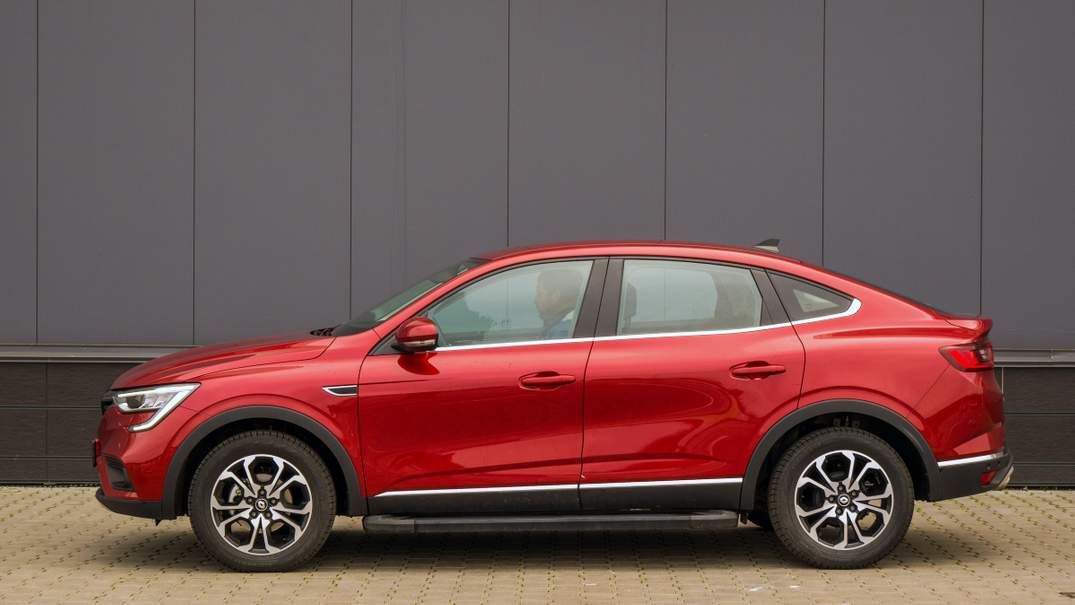
Whose Arcana really is
The automotive industry has long been an international industry, which has no limits. Cars made entirely in one country are almost impossible to find in the modern world. Renault Arkana is a clear confirmation of this. It was developed by Renault, made in Russia and South Korea, and for the Ukrainian market, final large-scale production takes place at the Ukrainian car factory in Zaporizhia. Accessories – from around the world.
Engine
TSe engine 150, developed by Renault in collaboration with Daimler. Modern turbocharged gasoline engine with a capacity of direct fuel injection 1,33 liter has the power 150 KM. It is also installed on the Mercedes-Benz A-Class (although with different settings, which allow you to get 160 KM).
The power of such an engine is sufficient for the Renault Arkana. According to feelings, it can be called "grassroots" – to get good acceleration you do not need to "gas". At speeds above 4000 there is a certain decrease in torque, although the maximum power specified in the curve is reached at 5250 giant / min.
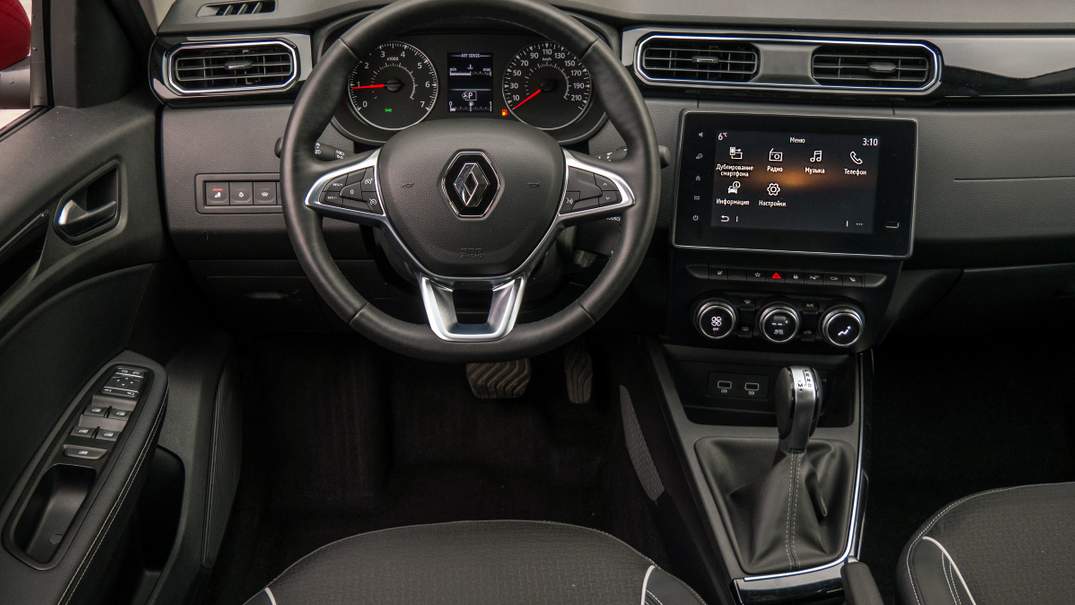
Transmission
The gearbox is a variator of the Japanese company Jatco. It moves very smoothly, Successfully mimics gear changes and saves fuel. The experience of using such gearboxes is already quite extensive and suggests, that the variators are well suited for a relaxed and balanced driving style. Instead, dynamic accelerations lead to increased wear of the variator parts.
Suspension
The suspension of the Renault Arkana is very similar to the Duster. It is energy consuming, allows you to drive quickly on the wrong road, has big moves, which positively affects the off-road capabilities. At the same time, Arkana has a very good "road" setting – the car sticks well in turns and clearly follows the steering wheel.
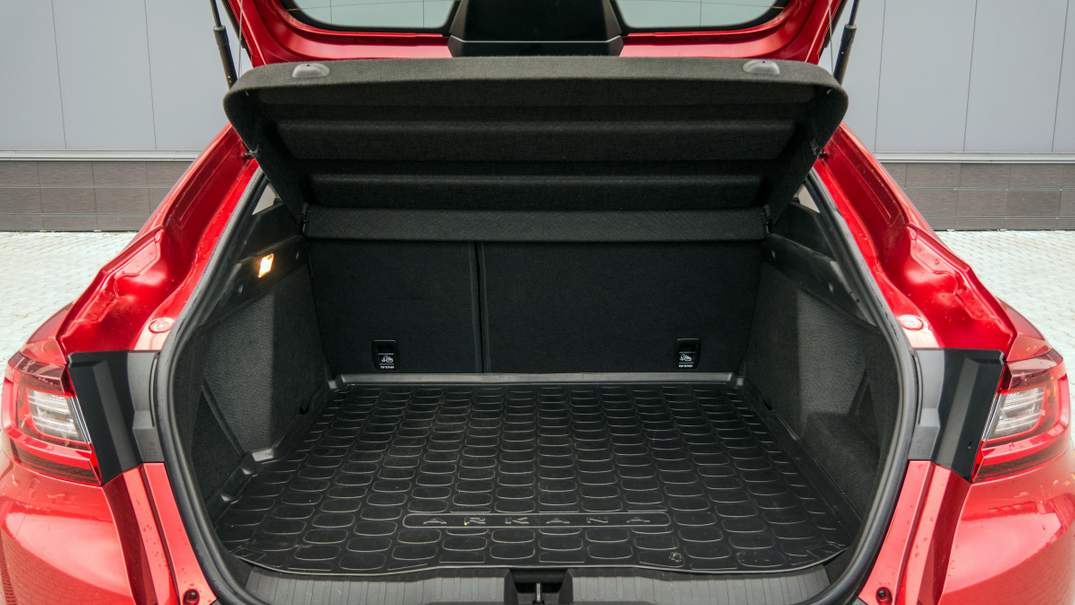
Conclusions
As you can see, Renault Arkana really has Russian parts: body, wiring, battery, wheels and some internal components. But the vast majority of important engine components, gearbox, suspension and electrical equipment is manufactured in other countries. Final assembly takes place in Ukraine. Therefore, this car cannot be considered entirely belonging to one country.
| Technical characteristics of the test car | Renault Arkana |
|---|---|
| engine | Turbocharged gasoline with direct fuel injection, capacity 1332 cm 3 , moc 150 KM at 5250 giant / min, torque 250 Nm at 1700 giant / min |
| transmission | All-wheel drive, stepless automatic transmission with 7-speed simulation |
| body | Crossover fit, 5 door, 5 seats, dimensions (length / width / height): 4545/2063/1565 mm, basis 2721 mm, curb weight 1378 kg. Maximally 1954 kg, capacity 556 kg, boot capacity 508-1333 l, tank capacity 50 l |
| suspension | Front – independent (McPherson), back – multi-lever. Brakes (front / back): ventilated / drum discs. Tires 215 / 60R17. |
| performance – fuel consumption | The maximum speed is 191 km/h. Acceleration to 100 km / h w 10,5 seconds. Fuel consumption (city / highway / mixed) 9,1 / 6,1 / 7,2 l / 100 km |